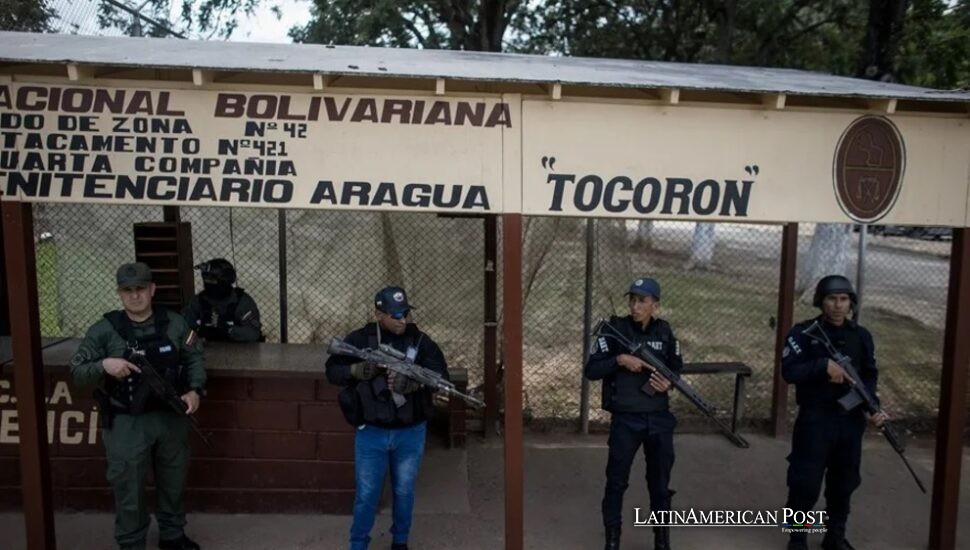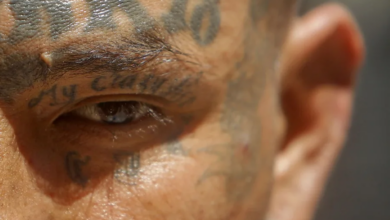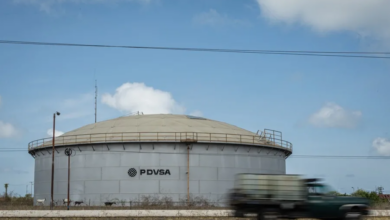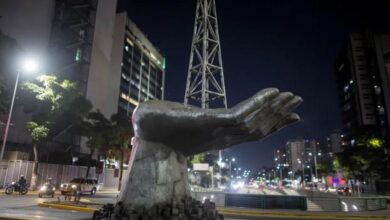Venezuela’s Tren de Aragua: Prison Gang or Political Weapon?

For two years, the Venezuelan government has declared the Tren de Aragua dismantled. Yet across South America, and increasingly in Washington, the gang’s name remains shorthand for fear, chaos, and the dark power vacuum left by a failing state.
The Prison Gang That Became a Transnational Empire
The Tren de Aragua did not emerge from jungles or drug labs but from Tocorón prison in Aragua state. In the early 2010s, inmates forged their own sovereignty behind crumbling walls. What began as extortion—charging fellow prisoners for their survival—soon evolved into a hierarchical organization with a reach beyond the bars.
The gang’s name, drawn from an unfinished railway project, turned into a brand feared across the continent. By 2018, the group had exploded past Venezuela’s borders, first into Colombia and then further south into Peru and Chile. Cells now appear in Ecuador, Bolivia, and Brazil. Their expansion followed the path of the Venezuelan exodus—migrants in flight became both prey and profit.
Reports show the Tren “systematically exploited” migrants, charging for clandestine crossings, extorting families, and controlling trafficking routes. Brutality was paired with adaptability. The group integrated into local criminal economies, forging pacts or crushing rivals with spectacular violence. Their business diversified: human smuggling, sex trafficking, illegal lending, kidnapping, extortion, and small-scale drug runs.
At the top sits Héctor Rustherford Guerrero Flores, alias “Niño Guerrero.” Though Caracas claimed victory after raiding Tocorón in 2023, Guerrero remains at large. His survival fuels suspicions of protection—either by corrupt Venezuelan officials or by allies abroad.
A Contested Narrative Between Caracas and Washington
Here, the story becomes entangled in politics. Nicolás Maduro’s government insists the Tren de Aragua is broken, dismissing it as a myth manufactured by Washington to smear Venezuelan migrants and destabilize his regime. Maduro has even accused former Colombian presidents Álvaro Uribe and Iván Duque of shielding Guerrero, portraying the gang as a foreign conspiracy.
Washington paints a starkly different picture. The Trump administration, back in power, has labeled the Tren de Aragua a terrorist organization and placed a bounty on Guerrero’s capture. “They operate under Nicolás Maduro, responsible for mass killings, drug trafficking, sexual trafficking, and terrorism against the United States,” Trump declared.
The rhetoric has been matched by force. Since August, U.S. forces claim to have sunk four boats linked to Venezuelan traffickers in Caribbean waters, killing at least 17 people. Trump boasted that 11 Tren members were among the dead in the first strike. In another move, Washington deported 252 Venezuelans to a prison in El Salvador, branding them gang affiliates. They were eventually returned to Venezuela in July, but the message was clear: the Tren is now shorthand for crackdowns, both military and migratory.
For Caracas, these actions amount to aggression. Defense Minister Vladimir Padrino called them an “undeclared war.” To Maduro’s supporters, the Tren de Aragua is a scapegoat or phantom enemy designed to justify U.S. intervention.
Fear Across South America
While leaders trade accusations, fear plays out daily in borderlands and cities. Colombian police have arrested dozens allegedly linked to the gang. In Peru, the Tren is tied to gruesome murders and extortion rackets. Chilean prosecutors describe it as the most dangerous imported criminal group in their history. Each new arrest undermines Caracas’s narrative of dismantlement.
For ordinary Venezuelans abroad, the stigma cuts deep. Many are fleeing poverty and authoritarianism, yet in host countries, the Tren has become shorthand for Venezuelan criminality. Advocacy groups warn of unfair profiling and rising xenophobia. But the gang’s footprint is undeniable—extortion, sex trafficking, and loan-sharking follow the same script from Bogotá to Santiago.
The paradox is glaring: in Caracas, officials declare victory over a gang they say barely exists; across South America, governments describe a metastasizing threat destabilizing communities and undermining trust in migrants.
What the Tren de Aragua Really Represents
The Tren de Aragua is more than a gang; it is a mirror. It reflects Venezuela’s collapse, where prisons became command centers and state weakness allowed mafias to flourish. It demonstrates the vulnerability of migrants, who became both workforce and quarry. It reflects geopolitics, where Washington uses its name to justify naval deployments and mass deportations, while Caracas waves it away as propaganda.
Two years after Tocorón’s raid, the questions remain. Has the gang truly been weakened, or merely dispersed? Does the Venezuelan state tolerate it, battle it, or quietly profit from it? Can regional governments cooperate to uproot a network that thrives on borders, corruption, and despair?
The truth lies between extremes. The Tren de Aragua is neither a phantom conjured by the U.S. nor an omnipotent cartel rivaling Mexico’s giants. It is something more insidious: a hybrid structure born of Venezuela’s implosion—nimble enough to exploit migration flows, brutal enough to terrorize communities, and convenient enough to be weaponized in politics.
Also Read: Brazil’s Waterway Debate: Progress Cannot Mean Empty Nets and Silenced Rivers
Its persistence is a warning. Destroying a headquarters does not kill a brand. Arresting foot soldiers does not dismantle a transnational franchise. And politicizing its existence—whether to stigmatize migrants or to deny responsibility—only ensures its shadow lingers.




